Cold Water Fish
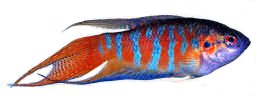
Cold water fish (excluding Goldfish) are available to make your unheated aquarium something different, these fish can be added to ponds and aquariums with no heater required.
Cold water fish include some of the most popular aquarium fish species, due to their hardy nature, colourful appearance and because they are so easy to breed. Supplementing their diet with blood worms can be done to try and bring out their colours even more and they are excellent fish for a beginner and for most community aquarium setups.
Things you might need
- Fish Tank/Bowl
- Food – flakes, pellets and live or frozen food
- Pet City Water Conditioner
- Pet City Purer Water
- PH Test Kit
- Neutraliser Blocks
- Filter
- Gravel Cleaner
- Rocks/Plants
- Decorations/Ornaments/Backgrounds
- Aqua Salt
- Fish Net
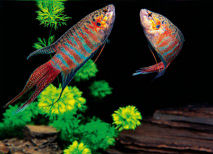
Types of Cold Water Fishes
Many cold water fish are only suitable for larger size aquariums. These fish are large enough that they are also desirable choices for outdoor ponds and can stand temperatures down to 10°C.
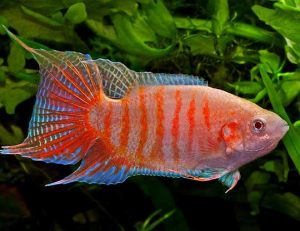
Paradise Fish
This is a very adaptable fish, able to be kept in unheated or heated aquaria, and in outdoor ponds. Can sometimes be aggressive towards tankmates such as fancy goldfish, but this varies with individual fish. The Paradise Fish has been popular as an aquarium fish since the 1860′s, and a number of different aquarium varieties now exist. Males grow to about 7-8cm and the females remain slightly smaller. In nature, Paradise Fish are found from Korea, southwards to Vietnam.
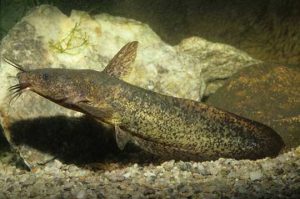
Tandanus Catfish
A very popular and hardy native catfish suitable for both heated and unheated aquaria. Grows to 60cm, usually significantly smaller in aquaria. Large specimens may eat small fish.
Like all Australian eel-tail catfishes, handle with care as the dorsal and pectoral spines are capable of inflicting a painful wound.
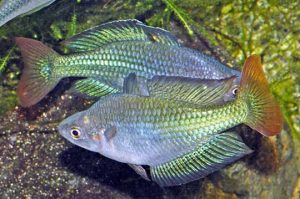
Murry River Rainbow
Native to the Murray-Darling basin, the Murray River Rainbow tolerates a wide range of water temperatures (25-30 C in summer and down to 9-10 C in winter). It is an ideal native fish for unheated aquaria and garden ponds – active, peaceful and easy to care for. In outdoor situations, it is a very efficient means of controlling mosquito larvae. The males develop a blue-green body, black edged fins and an orange tail, they can grow to 9-10cm whereas the females remain slightly smaller.
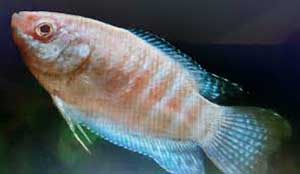
Albino Paradise Fish
This is a very adaptable fish, able to be kept in unheated or heated aquaria, and in outdoor ponds. Can sometimes be aggressive towards tankmates such as fancy goldfish, but this varies with individual fish. The albino form has very nice red stripes contrasting against its background colour. Males grow to about 7-8cm and the females remain slightly smaller.
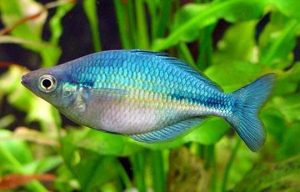
Blue Neon Bitterling
Bitterlings are tolerant of cool water, making it an ideal candidate for unheated aquaria in Australia. They grow to about 9cm and are not particularly fussy about water or feed requirements. Males develop a beautiful rainbow colouration when mature, whilst females remain silver. Bitterlings have the unique habit of requiring freshwater mussels in which to lay their eggs; the fry are then released from the mussel when ready and feed on small particles of food in the water. The Blue Neon is one of the nicer colour forms of Bitterling.
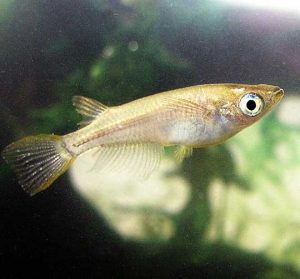
Gold Medaka
Native to East Asia, Medakas are often found in rice paddies and are also known as Ricefish. The wild type is rather plain, thereas the gold form is an attractive golden-yellow with gold-orange fins. It tolerates large temperature fluctuations and is ideal for controlling mosquito larvae in outdoor water features in most parts of Australia. Gold Medakas are also well suited to unheated indoor aquaria, as long as tankmates are not overly large. Peaceful, hardy and easy to feed, they grow to 3.5cm.
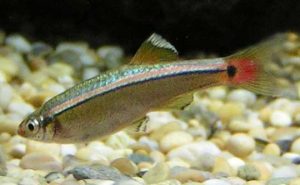
White Cloud
One of the most popular of all aquarium fish, White Clouds tolerate a wide range of temperatures and are ideal for both heated and unheated aquaria, and for outdoor water features. Very peaceful, they are best kept in a school as this gives the males a chance to try and outshine their rivals with impressive fin displays. They are not fussy about water conditions and eat most standard fish foods. Originally native to southern China (but now reputedly endangered in the wild), they grow to about 4cm. They breed readily and the young fish have a neon stripe.
